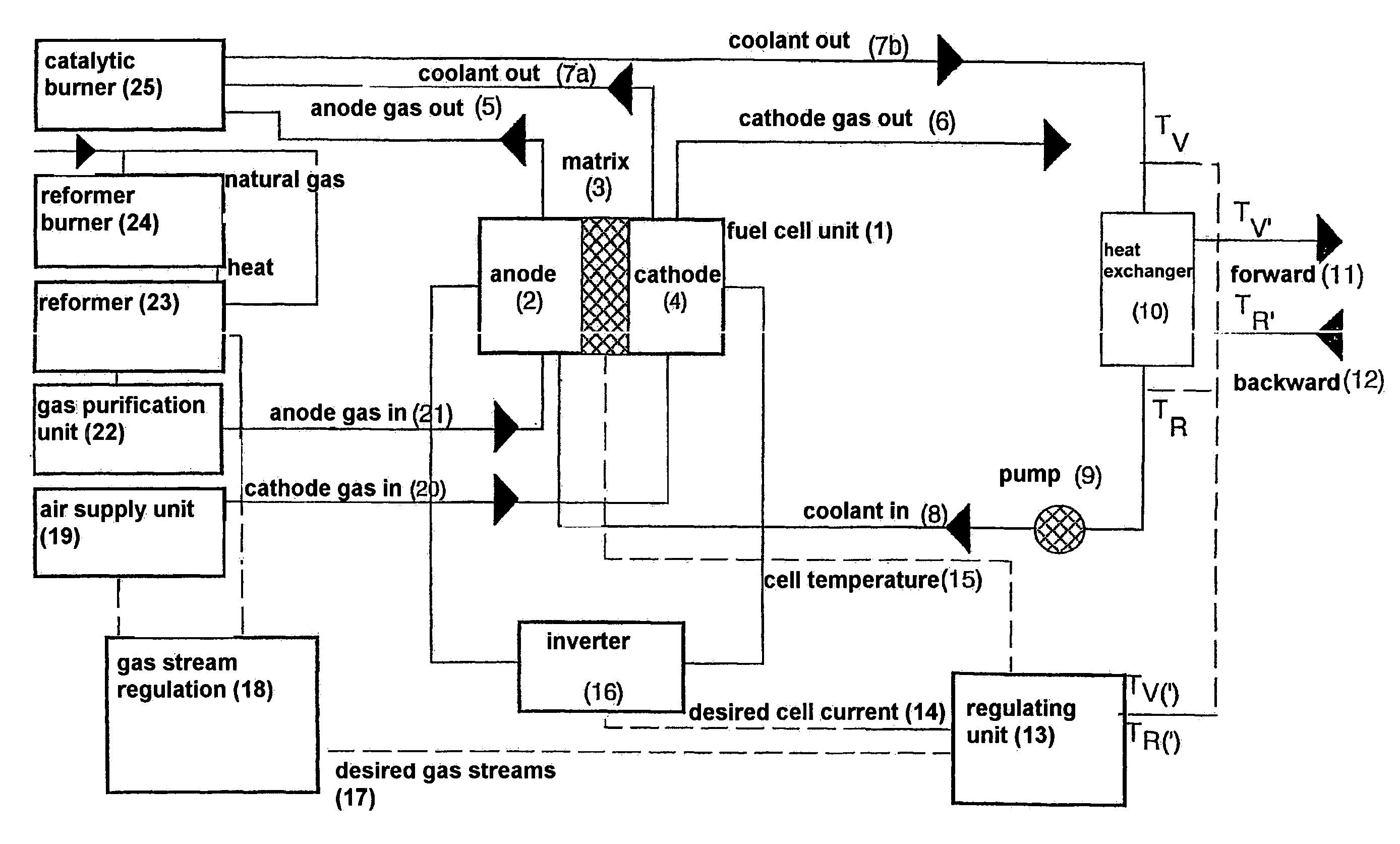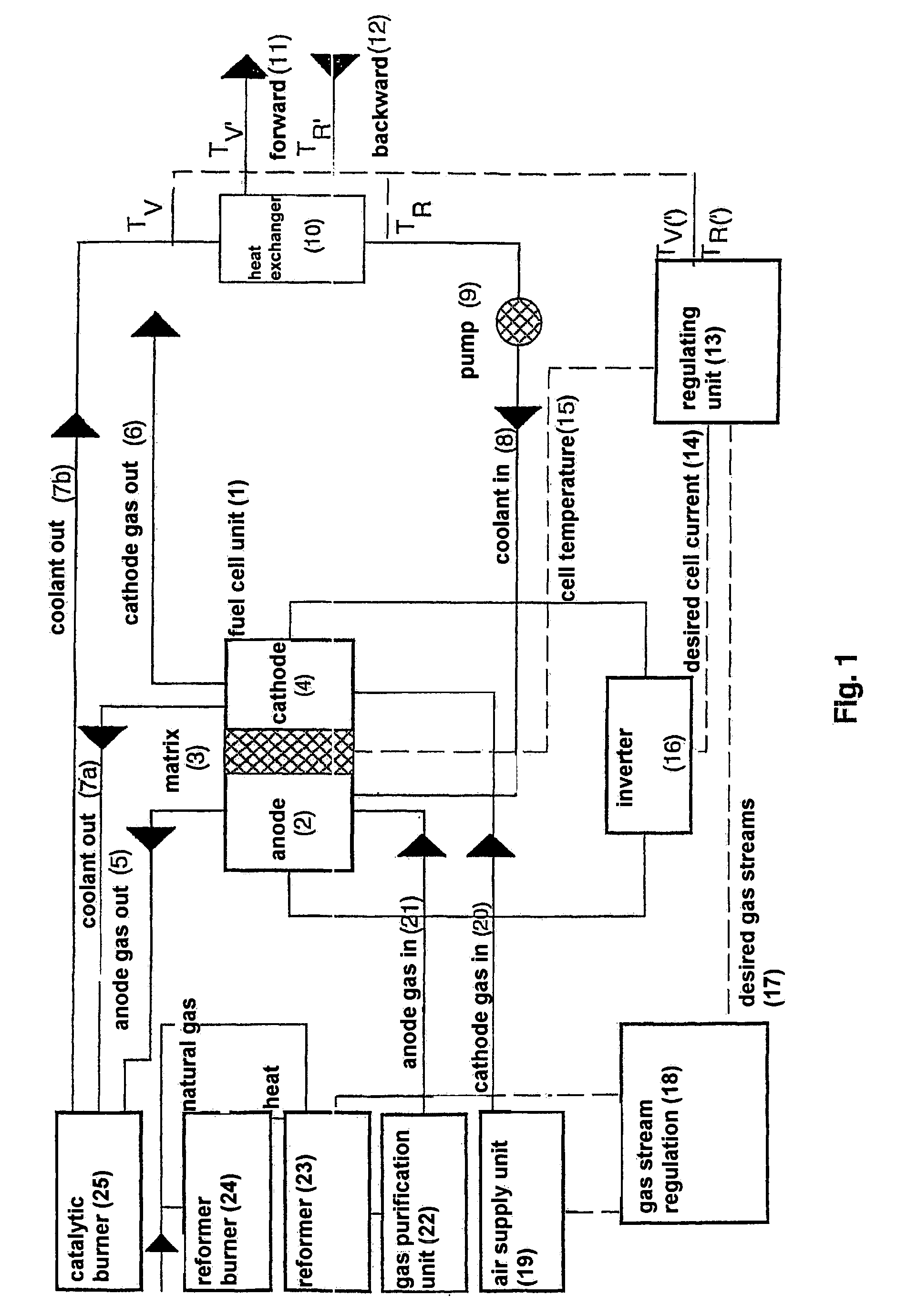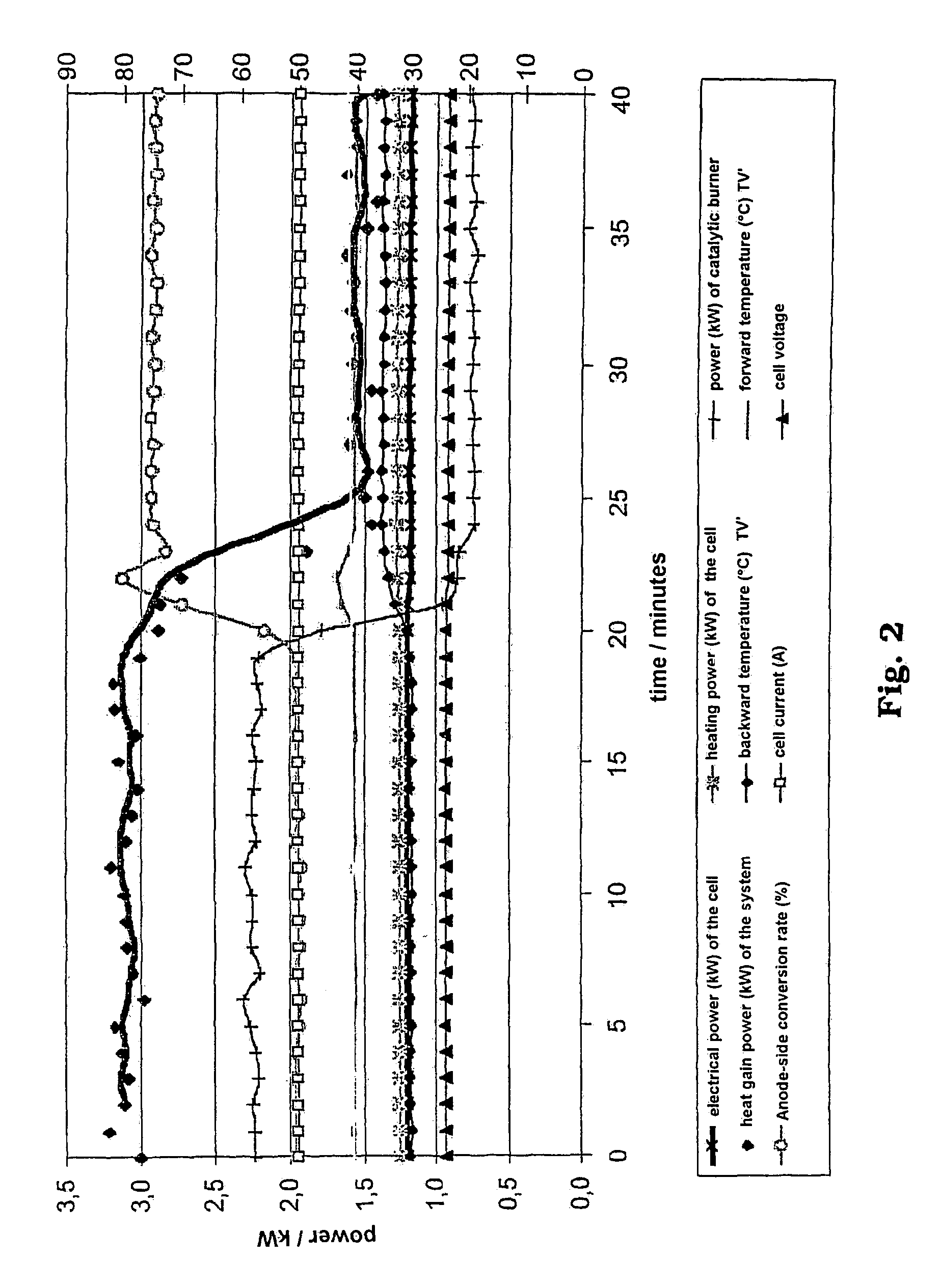Method for regulating operation of fuel cell installations controlled according to heat and/or power requirement
a technology of fuel cell and operation control, which is applied in the manufacture of cell components, electrochemical generators, and final product manufacturing, etc., can solve the problems of deterioration of fuel cells, inability to apply fuel cells, and reduced overall efficiency, so as to improve the controllability of the system, simplify the system design, and achieve economic system setup
- Summary
- Abstract
- Description
- Claims
- Application Information
AI Technical Summary
Benefits of technology
Problems solved by technology
Method used
Image
Examples
Embodiment Construction
[0030]FIG. 1 shows the diagram of a regulating method in accordance with the invention in a fuel cell combined heating and power plant.
[0031]A fuel cell unit 1, constructed of a single cell comprised of at least one anode 2, matrix 3 and cathode 4, is supplied with operating gases by a combustion heat supply unit comprised of a reformer burner 24, reformer 23 and gas purification unit 22 on the anode side through line 21 and by an air supply unit 19 through line 20 on the cathode side. The residual gases are discharged on the gas side through an anode gas outlet 5 in a catalytic burner 25 and on the airside through a cathode gas outlet 6. The fuel cell unit 1 is cooled by a coolant circuit comprised of a pump 9, a coolant supply 8, a coolant discharge 7a and 7b as well as a heat exchanger 10. In the heat exchanger 10, the coolant is cooled by a heat gain circuit comprised of forward and backward [temperature]. The forward temperature Tv of the coolant is supplied to regulating unit ...
PUM
| Property | Measurement | Unit |
|---|---|---|
| electrical power | aaaaa | aaaaa |
| temperature | aaaaa | aaaaa |
| stack current | aaaaa | aaaaa |
Abstract
Description
Claims
Application Information
 Login to View More
Login to View More - Generate Ideas
- Intellectual Property
- Life Sciences
- Materials
- Tech Scout
- Unparalleled Data Quality
- Higher Quality Content
- 60% Fewer Hallucinations
Browse by: Latest US Patents, China's latest patents, Technical Efficacy Thesaurus, Application Domain, Technology Topic, Popular Technical Reports.
© 2025 PatSnap. All rights reserved.Legal|Privacy policy|Modern Slavery Act Transparency Statement|Sitemap|About US| Contact US: help@patsnap.com



